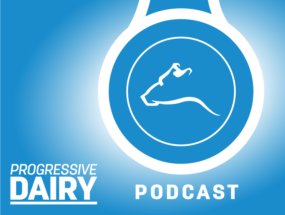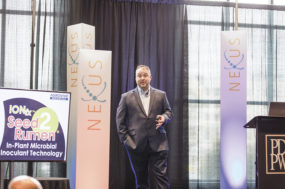Producers in several regions expressed strong opinions about changes to Class I differentials, which have not been adjusted since Federal Milk Marketing Order (FMMO) reform in 2000.
Class I differentials are financial incentives designed to encourage fluid milk supply and movement to areas of need by increasing milk prices to cover transportation and other costs. Current Class I differentials are based on a University of Wisconsin national price surface model (Wisconsin model) as a starting point, incorporating regional milk supply and demand as well as processing and transportation costs.
Proponents for change said that model no longer fully captures necessary price adjustments based on distance to market.
“I am in favor of raising Class I location differentials to more accurately reflect the changes in the milk markets today compared to 20 years ago,” H H Barlow said in his testimony. “I also believe the Southeast should continue producing milk instead of having finished products imported into our markets. I believe that with some changes in the component values, we could have a growth area for milk production and processing. I know this is particularly true for the state of Kentucky where we are very desirous of growing our milk production.”
Barlow dairies in Kentucky and discussed location differentials, the Class I mover and “higher of” formula, component pricing and make allowance adjustments in his testimony. He said he is in “general agreement” with the proposals submitted by the National Milk Producers Federation (NMPF) to modernize the pricing system, and he supports both NMPF and the American Farm Bureau Federation positions on the points he discussed.
Due to the continued reduction of milk production in the Southeast, Illinois dairyman Frank Doll has been shipping his milk into the Southeastern market on a year-round basis since 2017. Doll testified in support of Proposal 19 to update Class I differentials throughout the U.S. as proposed by the NMPF. The NMPF proposal adjusts Class I differentials for 3,108 counties, parishes and independent cities.
“My milk price increased [when] shipping to the southeast part of the U.S. with the increase of the price surface,” Doll said in his testimony. “As my milk travels further south/southeast, my milk price increases due to the price surface being larger to help defray some of the milk costs associated with the additional miles.”
Like many other producers, Doll described the rising costs of supplies, labor and other inputs.
“The cost of shipping my milk to market increased as my hauler continues to remain competitive to hire drivers, along with the cost of buying and maintaining equipment. Our cost to ship milk has increased approximately 32.8 percent in the last six years. The price surface has not been updated in over 20 years [aside from updates in the Southeast about 15 years ago], so it is time to make some changes so we can help offset the additional costs we are experiencing on the farm,” Doll said.
Farther west, in Colorado, dairymen Chris Kraft and Rick Podtburg testified individually about some of the challenges related to Proposal 19.
Podtburg testified in support of NMPF’s proposed changes to the FMMO system, with the exception of the price surface adjustments.
“Colorado is on the western edge of the Central Federal Order 32,” Podtburg said in his testimony. “Currently, the location differential for Weld County, Colorado, where Greeley is located, is 45 cents per hundredweight more than Jackson County, Missouri. The University of Wisconsin model puts Weld County, Colorado, at a disadvantage compared to Jackson County, Missouri, with a negative difference of a dollar more per hundredweight between the two locations. The NMPF proposal is better but still puts Weld County 15 cents per hundredweight lower than Jackson County. We need to maintain the 45 cents per hundredweight positive relationship Greeley currently has.”
His reasoning is that they have the “highest cost of production for any location in Federal Order 32.”
Kraft also testified in support of the proposals submitted by NMPF and addressed the Class I price surface proposal with respect to his home state. He explained how his farm’s cost of production has “exploded” in the last few years, comparing 2015 to 2022.
“Costs remained similar 2015 through 2019 and then shot up from 2019 to 2022 by 4 dollars and 49 cents per hundredweight, which is a 28 percent increase,” Kraft said in his testimony. “In Colorado specifically, the cost of water for the cows on the dairy and to grow their feed has gone up rapidly as the population in our state has grown and the competition for our limited water supplies has increased.”
Kraft agreed with Podtburg about the limitations of the Wisconsin model for Colorado dairies.
“The Wisconsin price surface model does not recognize the unique circumstances involved in supplying a large Class III cheese plant in Colorado,” he said.
Several producers agreed on the importance of the hearing and the impact it will have on them and their peers.
“The outcome of this hearing will have huge consequences for our dairy industry and especially on the farm,” Kraft said.
Barlow reiterated the importance of the USDA’s recommendation causing no harm on the farm level.
“It is imperative that the final result of this hearing does not harm producer pay prices,” Barlow said. “I have spent a lifetime as a dairy farmer and been involved in the dairy industry in practically every phase of it. Dairying and cows are my life, but as you can see, I am in the sunset of my career. I came today not so much for myself but for all the young dairymen that have the passion I have always had – to be a successful dairyman.”








